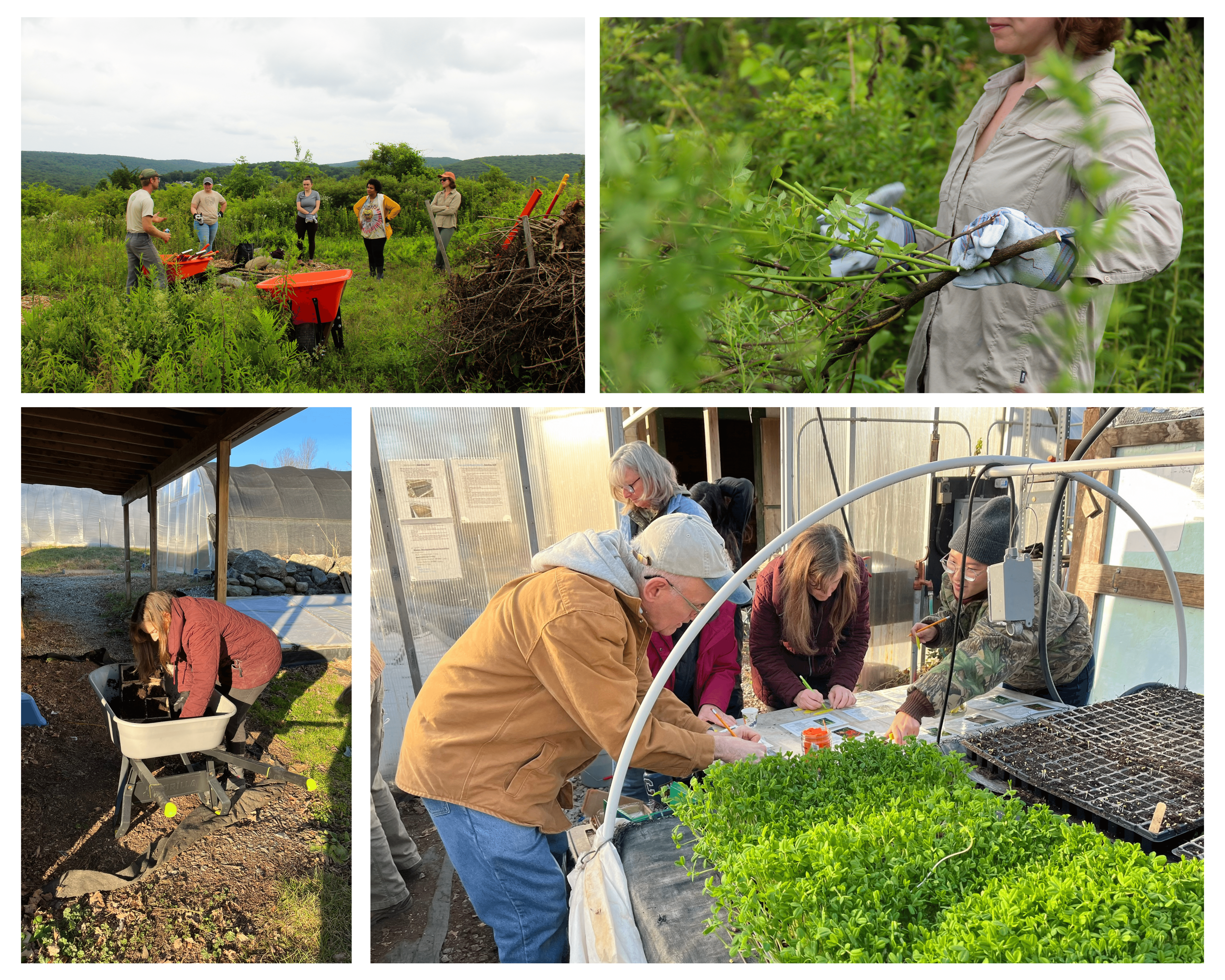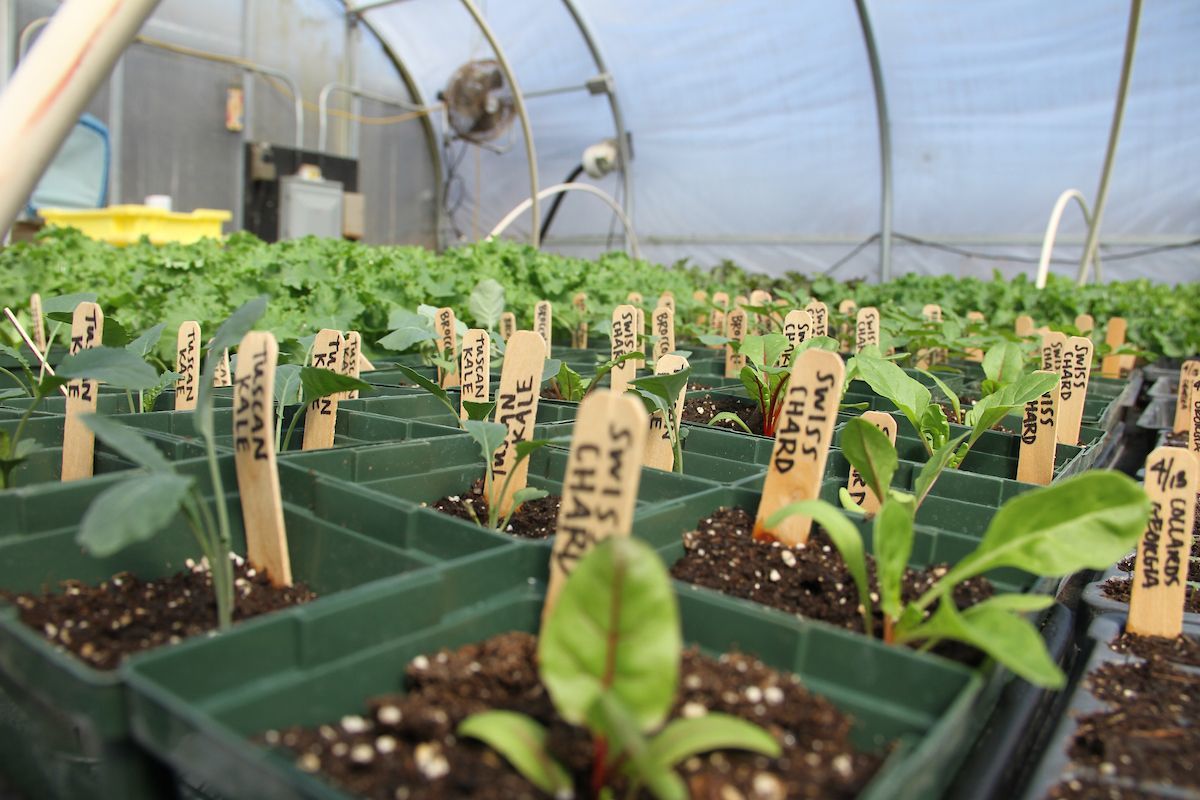
In the third installment in our series on the Multiflora Thicket Restoration project (check out blogs #1 and #2 here), we highlight the remarkable efforts of our dedicated volunteers. With sweat-drenched brows and a shared commitment to environmental stewardship, the Hudson Valley community and our dedicated Glynwood crew have worked tirelessly to remove invasive species and help restore a more optimal environment for native plants.
July 2023 brought high temperatures, but that didn't deter our volunteers from tackling the invasive Multiflora Rose that had taken root. Armed with shovels and clippers, they delved into the task of reclaiming patches of land from the clutches of this aggressive brush. As the sun beat down, the community stacked the removed bushes into what is known as a "dead hedge," a natural barrier that not only serves as a marker of their hard work but also provides shelter for critters displaced during the removal process. This dead hedge, a mosaic of cut branches, foliage, and saplings, acts as a visual boundary while welcoming wildlife to nest and forage within its labyrinthine structure.
Navigating carefully to avoid disrupting a beehive and a delicate baby bird nest, volunteers carved out new spaces along the walking path, laying the groundwork for future native guilds. The dedication to preserving the delicate balance of nature was evident in every step, ensuring that the restoration process will continue to not only revitalize the land but also safeguard its inhabitants.
In December, our volunteers reconvened for another important task—propagating native seeds. Guided by experts from Hilltop Hanover, a bastion of sustainable agriculture and environmental education based in Yorktown, N.Y., the community crew delved into a hands-on workshop that promised to nurture the future of Glynwood Farms.
The workshop focused on stratifying and winter sowing native seeds, a crucial step in preparing them for transplantation to the thickets when the soil thaws in the spring. Seeds of Wild Bergamot, Indian Grass, Smooth Aster, and Butterfly Weed were carefully tended to, with participants gaining insights into the nuances of wild seeds compared to traditional agricultural crops. The discussion explored seed morphology and dormancy, illuminating the ways these traits contribute to genetic diversity and the successful germination of native plants.
As the volunteers sowed the seeds, they contemplated the importance of preserving unpredictable traits like seed dormancy. The growing process, it was emphasized, is not just about restoring the land but also about fostering resilience and adaptability within the native plant communities. The seeds, now snugly settled in their stratification process as they await replanting, hold the promise of a vibrant and biodiverse future for our land.
Come spring 2024, the carefully nurtured plants will find their new home on our land, ready to take root. The journey of restoration is a collaborative effort, a shared commitment to creating a haven where nature thrives and the community flourishes. Sweat, shovels, and the hum of the environment—this is the essence of this restoration story, a tale written by the hands of a caring community dedicated to the land they call home.
This work is supported by Partners for Climate Action Hudson Valley (PCA)

